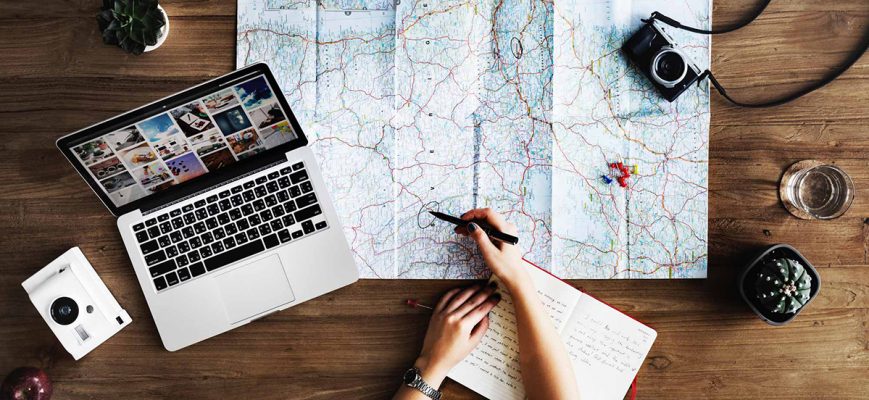Quality Translation for Tourism, Travel & Leisure
Translation for Tourism includes a range of materials and platforms: from website localisation, online booking platforms, hotel brochures, travel guides, promotional videos and tourist information, all the way through to on-site resort signage. Hospitality, Travel, Tourism, and Leisure together make up one of the most successful and competitive sectors in the world today. Effective translation of these materials, not only improves the experience of the traveler, but also serves as valuable marketing tools for tour operators, travel agencies, tour guides, airlines, and other stakeholders.
In 2024, Travel and Tourism accounts for 7.6% of global GDP and close to 300 million jobs. Tourism suffered as a result of the pandemic, but according to the World Economic Forum, “the Europe and Asia-Pacific regions and high-income economies in particular continue to have the most favourable conditions for T&T [Travel & Tourism] development.” One thing is certain, competition is fierce. It is no longer enough to assume that all travellers or tourists will speak English, or that they will accept marketing in a language or cultural register which is not their own.
Translation for Tourism: Marketing
Marketing is an interesting field of translation because, in this context, style and language register are actually more important than accuracy. Marketing copy seeks to create a mood, as well as conveying specific information, and your communications with potential customers will shape how they perceive your brand. Furthermore, your aim should be to produce a translated text which ‘speaks’ to the market to which it is destined. With this in mind, it is vital that your translator (a) writes well, and (b) understands the local culture and cultural references. According to an article in Forbes, “consumers have higher expectations than ever before for businesses to be helpful, knowledgeable and friendly.”
Marketing is an art, and like all arts, it requires a certain amount of practice. All of Quicksilver’s translators are experienced, native-speakers of their target language (ie. they translate INTO their native language). In terms of marketing, we also think it’s important that the translator lives in their target market, as it helps them stay up-to-date with new slang and colloquial expressions. Imagine trying to translate “Brat Summer” into a language you’re not completely familiar with! In fact, for slogans, taglines and other key messaging, we recommend transcreation.
Remember, if it took five marketing execs half a day to agree on the phrasing of one sentence in the original text; this negotiation will be even more challenging in translation! With this sort of project, there is always a payoff between accuracy and appropriate phrasing; and two translators will often give different (but equally good) versions of the same collateral.
Related topic: Marketing copy: Speak your Customers’ Language
How does it look?
No doubt your brochure or website was designed and crafted to look appealing to your audience — equally, the translated versions should look just as good. Some languages use more words than others to say the same thing. Your snappy tagline should be equally snappy in every language, and you may need to tweak it to achieve that. If the hotel information (for example) has to fit into a designated space on the website — will the translation(s) fit? If not, you will either have to adjust the design, or edit the description.
We offer an integrated translation and design/DTP service — which involves the following steps:
- Send us material to be translated, specifying your translation and DTP needs
- We send it back ready to deploy: translated, reviewed and neatly placed into your original layout.
- That’s it. 🙂
But localisation is about more than words. Did you know in China, clocks can symbolise time running out (and therefore impending death) so that friendly, fun alarm clock in your CTA won’t look so friendly in China. The thumbs-up sign is a rude gesture in many Middle Eastern countries (similar to the middle finger) so if you are using a thumbs-up icon, it should changed for this market. These are just two examples of potential hazards to avoid when localising your marketing materials, but there are many more.
It’s important to build a good rapport with your Language Service Provider (LSP) and trust their advice, particularly when dealing with languages and/or cultures you may not be familiar with. An appropriate and well-written translation of your campaign can have a significant impact on your reputation, and overall success in a new market.
Seasonal and Annual Updates
The quality of your translated content speaks volumes for your own commitment to quality, and respect for local cultures. And most translation for tourism involves small but frequent updates to multiple files across multiple languages. QuickSilver’s Translation Memory (TM) based methodology means that you will only pay for changes made, rather than for the translation of the entire document, each time you adjust a few paragraphs.
“Is it for me?”
Now more than ever, it is vitally important to respond to the needs and demands of diverse demographics and markets. A one-size-fits-all approach will not help you to break into new markets; it could even end up losing you business. These days, if a piece of advertising isn’t in your language, you ignore it, because there will almost certainly be a similar product which is marketed directly to you.
Of course, it is fundamental that a company or product have a strong, coherent global image. But the best way to develop and sustain a ‘total’ identity is by making a place for it in local markets. And this adaptation is about much more than simply putting your marketing collateral through Google Translate.

